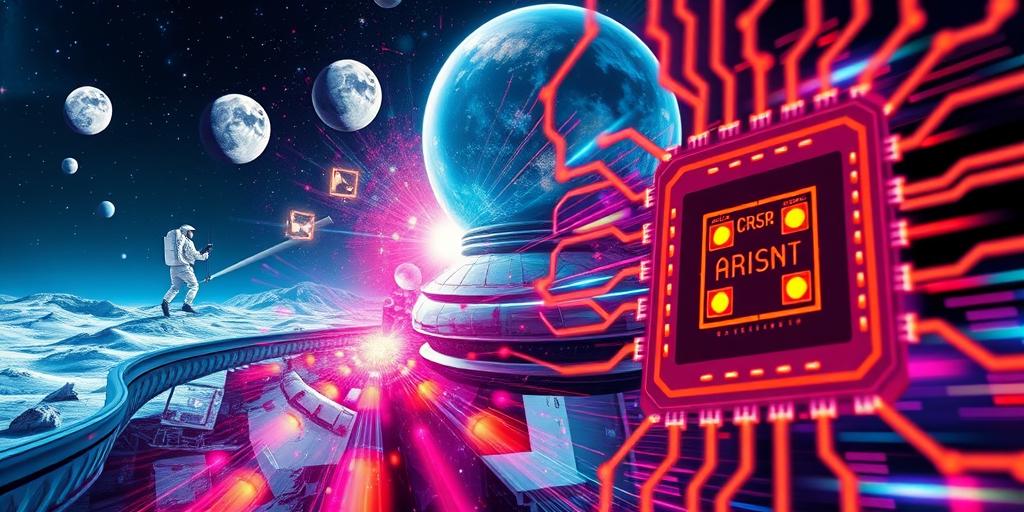Have you ever wondered about the groundbreaking experiments that defied expectations and reshaped our technological landscape? Prepare to be amazed as we delve into the realm of the “Craziest Tech Experiments That Actually Worked.” These aren’t your average lab mishaps; these are the improbable successes that redefined possibilities and changed the world as we know it. From seemingly impossible feats of engineering to mind-bending scientific breakthroughs, we’ll uncover the stories behind these revolutionary experiments.
The Dawn of the Internet: ARPANET’s Unlikely Success
The internet, a ubiquitous part of modern life, wasn’t born from a single eureka moment. Instead, it’s the culmination of a daring, almost reckless experiment: ARPANET. This early packet-switching network, conceived during the Cold War, was designed to withstand attack – a crazy idea at the time. Imagine trying to build a network that could survive a nuclear strike! Each packet of data took a different route, making it resilient to failures. This ‘crazy’ approach was revolutionary, laying the foundation for the decentralized and robust internet we know today. It wasn’t just about survival; it was about creating a system resistant to single points of failure, a concept ahead of its time and crucial to its global success. The decentralized nature of ARPANET, initially seen as a weakness, turned out to be its greatest strength. This innovative approach demonstrated the power of distributed computing and foreshadowed the modern internet’s resilience and adaptability.
Overcoming Technological Limitations
Building ARPANET wasn’t easy. The technology of the 1960s was incredibly limited compared to what we have today. The transmission speeds were incredibly slow, and the computers themselves were gigantic and unreliable. Yet, the determined scientists and engineers pushed forward, overcoming these immense hurdles to bring their vision to life. The challenges they faced and overcame serve as inspiration for today’s tech pioneers. It is a testament to human ingenuity and perseverance in the face of seemingly insurmountable obstacles.
CRISPR: Rewriting the Code of Life
CRISPR-Cas9 gene editing technology has the potential to revolutionize medicine and agriculture. This technology is relatively new, but already showing immense promise in treating genetic diseases. It’s like having a highly advanced molecular scissors to snip out and replace faulty sections of DNA. The initial experiments were groundbreaking, successfully manipulating genes in a way never before possible. This opened doors to correcting genetic defects, designing disease-resistant crops, and even potentially eradicating inherited diseases. The possibilities are almost limitless. While ethical considerations remain, the initial success of CRISPR showcases the power of ‘crazy’ scientific ambition. Imagine a future without inherited diseases – this incredible technology brings us tantalizingly closer to that reality.
A Paradigm Shift in Genetics
Before CRISPR, altering the genome was a slow and arduous process. CRISPR made it far more efficient and precise. This is a paradigm shift in genetics, opening avenues for research and development that were unimaginable just a few years ago. CRISPR’s precision and relatively ease of use have made it a crucial tool for many scientific fields, promising significant breakthroughs across various sectors.
The Apollo 11 Moon Landing: A Giant Leap for Mankind
The Apollo 11 mission wasn’t just a technological marvel; it was a testament to human ambition. Landing a spacecraft on the moon in the 1960s seemed utterly impossible. Yet, through sheer determination, incredible engineering, and a hefty dose of calculated risk, NASA pulled off what many considered to be an impossible feat. The complexity of the mission, considering the constraints of the time, was immense. But the success was astounding, impacting science, technology and inspiring generations.
A Confluence of Engineering and Innovation
The Apollo missions were a massive collaborative effort. Thousands of engineers, scientists, and technicians worked tirelessly to overcome countless challenges. The success of the mission was not only due to technological breakthroughs but also due to meticulous planning, risk assessment and effective teamwork. The lessons learned from the Apollo program continue to influence space exploration today.
The Invention of the Transistor: A Tiny Revolution
The invention of the transistor was a revolutionary technological leap. Before transistors, electronics relied on bulky, inefficient vacuum tubes. The transistor, a tiny semiconductor device, replaced these cumbersome components, paving the way for smaller, faster, more energy-efficient electronics. This seemingly small change led to a cascade of innovations, influencing nearly every aspect of modern technology.
From Vacuum Tubes to Microchips
The transistor’s impact is profound and far-reaching. It is the cornerstone of modern electronics, from smartphones and computers to medical equipment and satellites. It’s difficult to overstate the impact of this seemingly small invention on our daily lives. The subsequent miniaturization of transistors led to the development of integrated circuits and microchips, leading to the exponential growth in computing power that we witness today.
So, there you have it—a glimpse into the world of astonishing technological breakthroughs born from audacious experiments. These successes, once deemed improbable, changed the course of history. What incredible innovations await us in the future? Only time will tell. But one thing’s for sure: the willingness to explore the seemingly impossible fuels progress.
Want to learn more about the future of tech? Subscribe to our newsletter to stay up-to-date on the latest breakthroughs!




